TIRE AND WHEEL RUNOUT MEASURING AND REPAIRING

Wheel runout should be measured with an accurate dial indicator graduated in thousandths of an inch. Measurements may be taken with the wheel installed on the car, or off the car using an accurate mounting surface such as on a wheel balancer. Measurements may also be taken with or without the tire mounted on the wheel.
Radial runout and lateral runout should be measured on both the inboard and outboard rim flanges. Maximum runouts and recommended measurement locations are shown in chart. With the dial indicator firmly in position, slowly rotate the wheel one revolution and record the TIR (Total Indicator Reading). If any measurement exceeds these amounts, and if the vehicle should experience a vibration condition that wheel balancing will not correct, the wheel should be replaced. Disregard any indicator jumps due to welds, paint runs, scratches, etc.
Wheel Runout Specifications.
Steel Wheels Aluminum Wheels ------------ --------------- Radial Runout .040" .030"
Lateral Runout .045" .030"
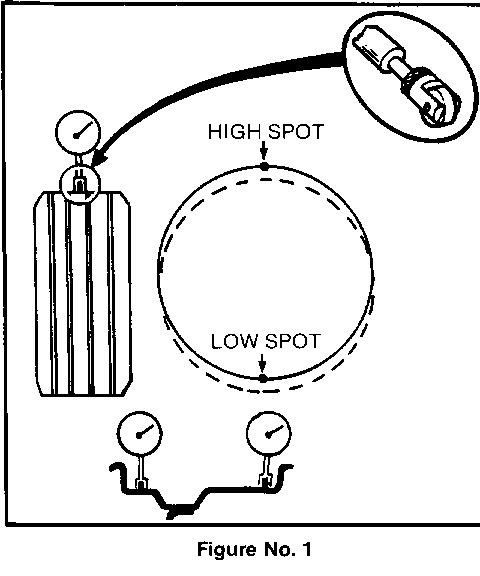
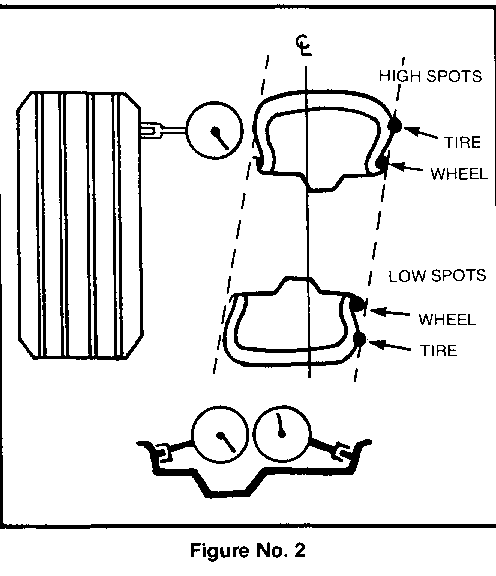
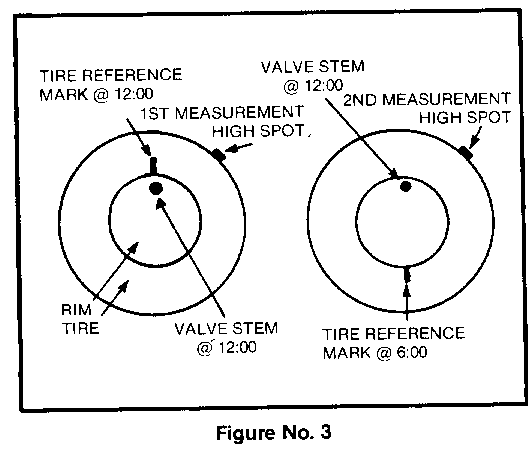
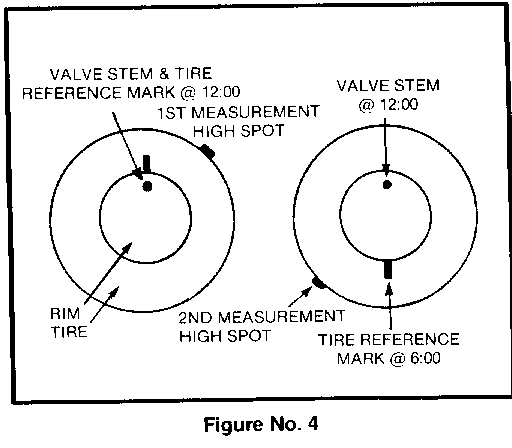
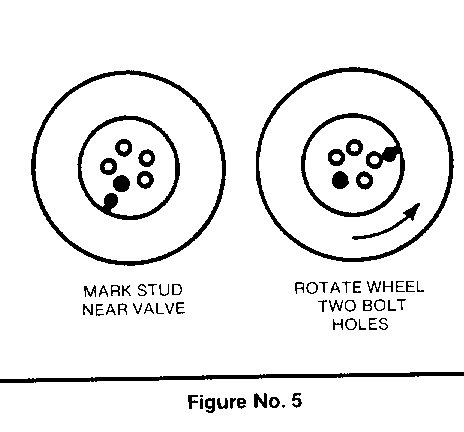
General Motors bulletins are intended for use by professional technicians, not a "do-it-yourselfer". They are written to inform those technicians of conditions that may occur on some vehicles, or to provide information that could assist in the proper service of a vehicle. Properly trained technicians have the equipment, tools, safety instructions and know-how to do a job properly and safely. If a condition is described, do not assume that the bulletin applies to your vehicle, or that your vehicle will have that condition. See a General Motors dealer servicing your brand of General Motors vehicle for information on whether your vehicle may benefit from the information.
